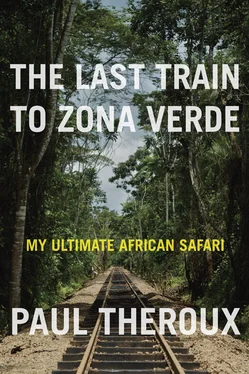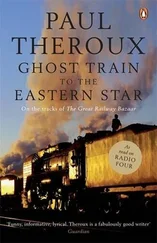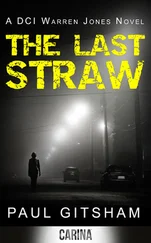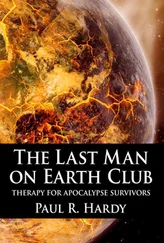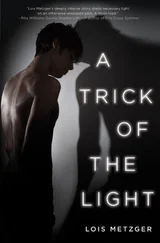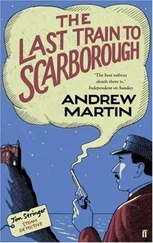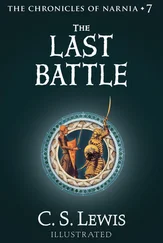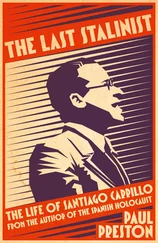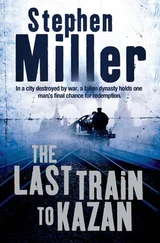Now I said to Phaks, “Take me there.”
The gas station was bigger and brighter than before. A new memorial, of black marble, much like a gravestone, had been placed on the roadside in front of it, on the fatal spot.
AMY BIEHL
26 APRIL 1967 — 25 AUGUST 1993
KILLED IN AN ACT OF POLITICAL VIOLENCE.
AMY WAS A FULBRIGHT SCHOLAR
AND TIRELESS HUMAN RIGHTS ACTIVIST.
“They killed her right there,” I said. Phaks grunted, and we drove away. The wording bothered me. “What is ‘an act of political violence’?”
“Those boys, they had a philosophy.”
“What was it?”
“Africa for Africans — it was their thinking.”
“That’s not a philosophy. It’s racism.”
“But they were political.”
“No. They killed her because she was white.”
“They thought she was a settler.”
He had told me that one of the chants at the time had been “One settler, one bullet.”
“But South Africa was full of white people who were part of the struggle. They supported Mandela, they went to jail. Whites!”
“But those boys said they were sorry,” Phaks said. “They apologized to the Truth and Reconciliation Commission. And her parents, they agreed.”
“But what do you think her parents really felt?”
“I don’t know. But you can see, they got their name there.”
“And getting their name there makes up for the murder of their child?”
“It was political. The parents, they hired the boys to work for them,” Phaks said, and now I could see he was rattled, because he was driving badly along the busy broken township roads, muttering at the traffic, the oncoming cars cutting him off.
“Phaks, do you have children?”
“Four.”
“A daughter?”
He nodded — he knew what I was going to say.
“What would you do if someone beat your daughter to the ground and took a brick and smashed it against her head? Then stabbed her in the heart and left her to die?” He winced but remained silent. “Would you say, ‘That’s their philosophy. It’s a political act’?”
“No.”
“What would you think?”
“Myself, I wouldn’t accept.”
“What if they said sorry?”
Phaks was very upset now, so I shut up and let him drive, but he was still fretful from my badgering him and kept murmuring, “No, no. I can’t. Never, never.” Nayvah, nayvah .
The Amy Biehl Foundation had been founded to promote peace and mutual understanding. It had also been instrumental in improving the infrastructure of Guguletu — upgrading huts and bringing in utilities. Doing that was easier than peacemaking. According to data collected by the South African Institute of Race Relations, more than seven hundred people were murdered in Guguletu between 2005 and 2010. This amounted to one murder every two and a half days over those five years.
My challenging Phaks had had the effect of winding him up. Now he was contrary, as I had been, and he was batting the steering wheel with his palm, pointing out the graffiti, the litter, the men and boys idling at shop fronts and street corners, and perhaps with the memory of the boys who’d been released after murdering Amy Biehl he began to see insolence and misbehavior all over Guguletu.
“These kids don’t behave,” he said. “They are out of control. They show no respect — and you know why? Because they have too many rights. Everyone protects them! Even the government, even the barristers!”
“You mean they’re not punished?”
“Not at all. When I was at school, if I did something wrong, I got a hiding. Then I came home, and when I told my father what had happened, he gave me a hiding!”
“Was that a good thing?”
“A very good thing. It has an impact, I tell you. It taught me a lesson. But this” — he gestured out the window; idle boys were everywhere, standing, sitting, eternally waiting — “this is really killing us.”
“Not enough hidings,” I said, to encourage him.
“Listen to me,” Phaks said. “Here there is a constitution for children. Can you believe such a thing? If you take your belt and thrash the child, he can go to the police and lay a charge against you.”
“So what’s the answer?”
“A hiding is the answer,” he said. “Take the rapist in Khayelitsha the other day. Did you hear about it? He was beaten. He was stripped naked. I tell you” — Phaks whipped his fingers — “he was really given a good hiding. He was bleeding. That was not the end of it. While he was lying there, three women stood over him and urinated on his body. Ha-ha!”
Phaks was in a good mood now, calmed with this peroration on rough justice. And he pointed out that in this part of Guguletu there were streets of new houses, like the streets earlier he had called “the Beverly Hills of Langa.”
Improbable, this upgrade — it all seemed a neatened version of what I’d seen at New Rest, fixed and improved and hopeful, the transition from slum to township, the structures braced and thickened and made whole. And after this long day of townships was done, anyone would conclude — I certainly did — that a solution to the squatter camps had been found. Hovels were made into homes, and a kind of harmony was established.
This was how, throughout history, cities had been built, the slums made into habitable districts of the metropolis, the gentrification of Gin Lane, the bourgeoisification of the Bowery. I thought of old prints I’d seen of sheep cropping grass in Soho Square in London, of shepherds following their flocks through the weedy ruins of nineteenth-century Rome, of cows grazing on Boston Common.
But the day was not done. We left the bungalows of Guguletu and took a side road into what looked like a refugee camp: thrown-together shelters, sheds covered with tin, skeletal frames patched with plastic sheeting and piled with boulders and scrap wood to prevent the sheeting from blowing away, pigpens, doghouses, crude fences draped with threadbare laundry. The shacks stood close together, with only foot-wide passageways between their outside walls. Smoke rose from cooking fires, lantern light glowed in the growing dusk, and improvised power lines hung overhead, like the web of a drunken spider, spun higgledy-piggledy, the visible images of string theory mapped in the twilit sky — squatters tapping illegally into the national grid.
This settlement was new, housing the most recently arrived people, land snatchers and hut makers and desperadoes. Some had arrived yesterday, more would arrive tomorrow, the shacks stretching for another mile across the dusty wasteland.
What looked like a refugee camp was a refugee camp — for the poor fleeing the provinces, having renounced the countryside and the rural villages, just coming to squat at the edge of the golden city. They too wanted real homes, running water, and electricity. There was no end to this township: the hostels led to the shacks, the shacks to the hovels, the hovels to the roadside and the bungalows, and beyond the bungalows and the shebeens were the newcomers in the twig-and-plastic lean-tos, straggling across the flatland. No sooner had a solution been found than a new solution was needed. It was the African dilemma.
“People keep coming,” Phaks said. “There are more townships you have not seen — Bonteheuwel …”
As he was listing them I saw, chatting by the roadside, in the vilest corner of the squatter camp, three teenage girls in white blouses, blue skirts, knee socks, and matching black shoes on their way home from school. They held satchels that bulged with books and homework. They stood out vividly because of the whiteness of their blouses in the failing light — harmonious and hopeful and a little surprising, like the sudden blown-open blossoms you see in a stricken ditch.
Читать дальше
